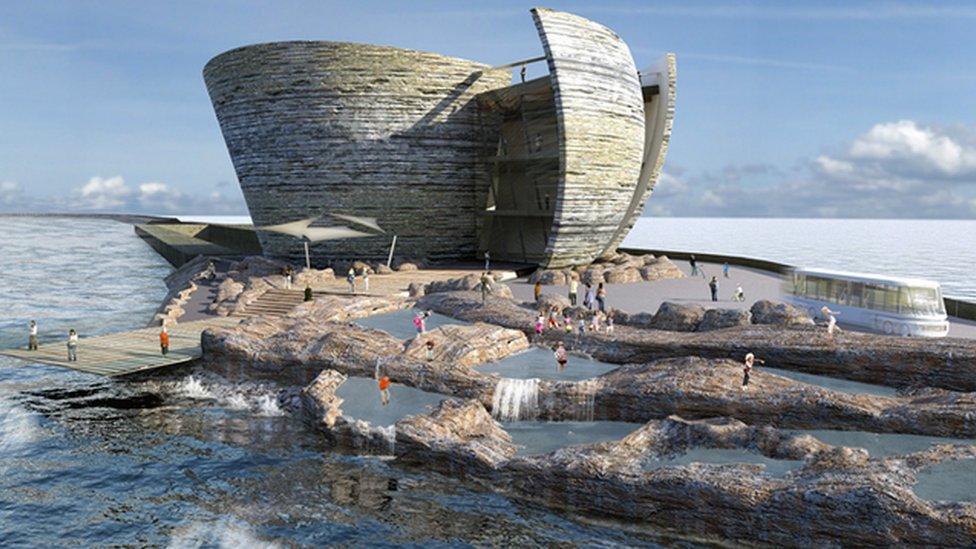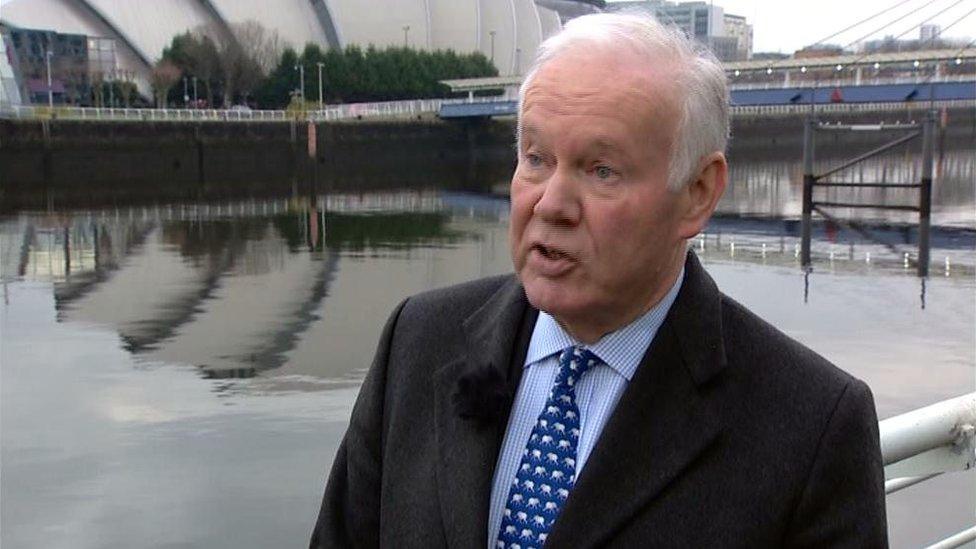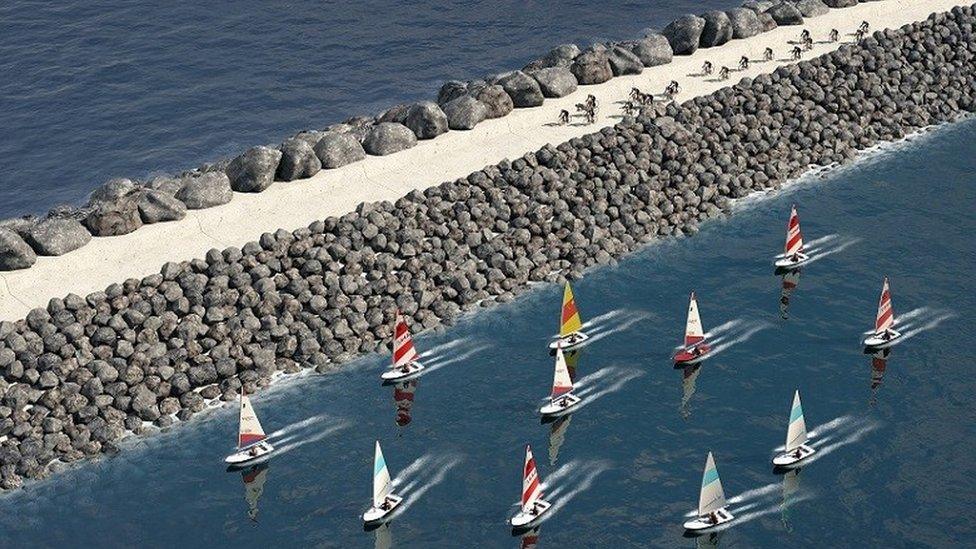Swansea tidal lagoon will still happen, says Charles Hendry
- Published
- comments
Charles Hendry urges the UK government to look at offshore wind success when considering the Swansea tidal lagoon project
The Swansea tidal lagoon will still happen despite delays, the man who conducted an independent review into tidal energy has predicted.
Charles Hendry backed the £1.3bn project in his government-commissioned review, external published in January 2017.
The UK Government is yet to give the go-ahead, but the Welsh Government has said it will offer "substantial investment".
But Mr Hendry argued the delay implied the project would still happen.
Watch Tidal Lagoon Power's video of how the turbines would work
"The fact the government hasn't said no is a cause for optimism," he said.
"I think the easiest thing for a government would have been to say quite early on in the process of reviewing my conclusions, to say we've looked at it alongside our other priorities, and this really isn't the time to do it - they haven't done that," he added.
"We've had distractions such as a general election, ministerial changes. So inevitably, it has taken the government some time to reach its conclusions, but I still think the case is compelling."

The project would see energy produced for 14 out of every 24 hours, according to TLP
Critics of the project argue it is too expensive, and will tie bill-payers into topping it up for almost a century, even though new technologies are likely to have emerged by then.
The developers want the government to guarantee the price paid for electricity from the lagoon over a 90 year period - a much longer contract than usual.
It would start at £123 per megawatt hour - higher than the £92.50 offered to the Hinkley Point C nuclear plant in Somerset - but reducing over time.
It averages out at £89.90 per megawatt hour over the length of the contract - but given that the lagoon is predicted to keep generating for up to 120 years it would be producing free power for the grid for the last 30 years.
Critics say other more established renewable schemes like wind and solar are already much cheaper and so the priority should be given to them.
Even if the finances are sorted, developers still need a marine licence to build it. But anglers in the area are worried about the impact the lagoon's 16 large turbines could have on fish and other wildlife.

An artist's impression of the lagoon across Swansea Bay
Much of the delays over the scheme's approval have been over whether it will provide "value for money".
But Mr Hendry said the £1.3bn cost would equate to "less than 50p a year" per household and it would "be some of the cheapest power" the UK would ever have, once the original capital investment has been paid off.
However, that is expected to take half of the lagoon's lifetime, which could be more than 120 years.
Mr Hendry was also buoyed by First Minister Carwyn Jones' promise to invest in the project, which he said would generate more money for Wales as the Welsh Government would take partial ownership of the lagoon.
He also said it would make a "significant difference" to the chances of the project going ahead.
"I still think the case is compelling. And I think this is something that future generations will say 'thank you for doing it, Wales has led the world'."
Rob Stewart, leader of Swansea City Council said: "We've always said in this region we can't rely on others to do stuff.
"If the UK government won't help us with this, if they can't see the value of fixing energy prices and renewable forms of energy long term then they need to get out of the way and let us get on with delivering it and we will look at other ways to do that."
- Published12 January 2018

- Published12 January 2017

- Published10 January 2018

- Published20 November 2017
